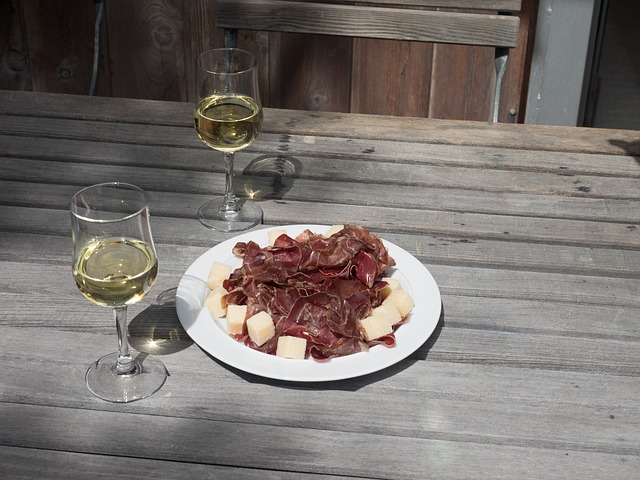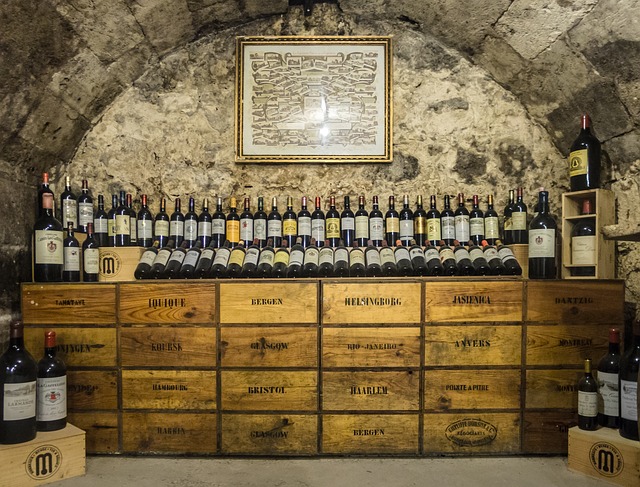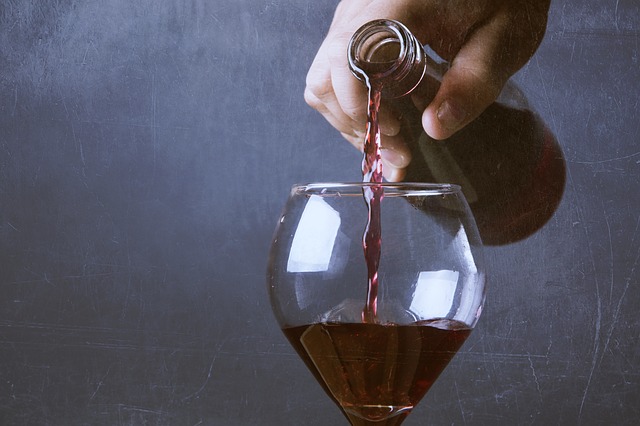A Typical feature of most restaurants is their focus on offering a well-prepared wine list that will complement the menu. A wine bar, also known as bodega, usually has a wide selection of wines available by the glass and offers a great opportunity to explore different wines. You can match food and wine whether you are enjoying a dining experience at a restaurant or at a wine bar. Keep wines in perspective with food; simple wines with simple meals and subtle wines with complex meals. Enjoy different wines on the wine journey and discover your personal preferences.
Types of White Wine:
To start your journey of getting familiar with wines, it may be a good idea to begin with white wine. There are many types of white wine. White wines are usually served in a narrower wineglass to allow an improved concentration of aroma. For a better understanding of white wines, we will take a look at the more common types.
- Chardonnay: Fully flavored white wine. The Australian chardonnay is typically fruitier. This popular wine is often oaky and usually dry. The best serving temperature for Chardonnay is 10 degrees Celsius or 50 degrees Fahrenheit. The average temperature for a refrigerator is 4 degrees Celsius, which is too cold for a white wine.
- Pinot Grigio: Italian and German Pinot Grigio are dry and crisp, and if produced in France; the wine tends to be fruity. The best serving temperature for Pinot Grigio is 10 degrees Celsius or 50 degrees Fahrenheit.
- Riesling: It originates from Germany and is also grown in France, California, Washington, Austria and New York. Tastes like a combination of apricot and peach flavors. The best serving temperature for Riesling is 10 degrees Celsius or 50 degrees Fahrenheit.
- Sauvignon Blanc: Grown in France’s Loire and Bordeaux regions, South Africa, New Zealand and California. This is a clean, crisp and dry wine. The best serving temperature for Sauvignon Blanc is 9 degrees Celsius or 48 degrees Fahrenheit.
- Semillon: Semillon grapes are typically sweeter with a golden color. The wine is usually blended with Sauvignon Blanc to achieve a more balanced taste and a fruit flavor. It is available in dry and sweet versions. The best serving temperature for Riesling is 10 degrees Celsius or 50 degrees Fahrenheit.
Types of Red Wines:
Red wines are produced from black grapes. The skin is what imparts the red color to the wine. Types of red wines include:
- Cabernet Sauvignon: Unique wood flavors of vanilla and spice. The best serving temperature for Cabernet Sauvignon is 17 degrees Celsius or 63 degrees Fahrenheit.
- Chianti: A very dry red wine and often has an aroma of cherries and a fruit character. The best serving temperature for Chianti is 15 degrees Celsius or 59 degrees Fahrenheit.
- Merlot: It s well-known for its light fruitiness. The best serving temperature for Merlot is 16 degrees Celsius or 61 degrees Fahrenheit.
- Pinot Noir: Fruity, smelling of strawberries, dark and delicious. The best serving temperature for Pinot Noir is 16 degrees Celsius or 61 degrees Fahrenheit.
- Shiraz: Dark berry flavors, as well as spicy. The best serving temperature for Shiraz is 18 degrees Celsius or 65 degrees Fahrenheit.
Many people find white wines refreshing when served cool, but a white wine that is served too cold will not have the ability to communicate its aroma to you. On the other hand, if a red wine is served to warm, the alcohol evaporates more rapidly. The alcohol plays a major part in contributing sweetness to the wine and to balance the degrees of bitterness and acidity. Most restaurants are knowledgeable of wine-serving temperatures.
Matching food with wine:

Wine has been part of the dining tradition for centuries. Wine also has the ability to enhance a dining experience. Food tastes better with wine as it cleanses the palate of oils from the food. The following list will give you an idea of how to match wine with cuisine from all over the world:
- Mexican: A fruity, full-bodied Sauvignon Blanc or Pinot Noir can be a good choice to match a traditional Mexican meal. Rieslings, for example, will not go well with the “heat” of a chili.
- Chinese: You cannot go wrong with a slightly sweet or off-dry wine when dining at a Chinese restaurant. Gewurztraminer, Rieslings or a Chenin Blanc can be an excellent choice.
- Japanese: Sparkling wines, a Rosé or off-dry, fruity wines go well with Japanese cuisine.
- Vietnamese: A fruity, slightly sweet Rosé goes well with traditional Vietnamese foods.
- Thai: A Rosé is the best choice to match Thai food.
- Indian: A full-bodied sparkling wine, Merlot or Zinfandel is a good choice when enjoying Indian food.
- Fried foods: Any crisp, dry, fruity wine will be a good match.
- South-western cuisine: Riesling, Sauvignon Blanc and sparkling wines are an excellent choice. Sparkling wine works well with seafood.
- Barbeque: Choose fruity and rich wines. Zinfandel Rosé can be a good choice.
If you are having more than one wine, remember to enjoy a young wine before an old wine. Younger wines are refreshing and prepare the palate for the robust, older wines. A white wine should be enjoyed before a red wine, light-bodied wines before full-bodied wines and dry wines before sweet wines.
No two people have exactly the same taste experience of the same food. It is the same element of personal discovery which attracts people into uncovering the enjoyment of wine and food. The following food and wine guidelines can help you to keep wines in perspective with foods:
- Fish served with a light sauce: Medium-bodied white wines;
- Fish served with a heavier sauce: Full-bodied white wines;
- Shellfish: Light-bodied white wines;
- Chicken: Light to medium-bodied white wines or medium-bodied red wines;
- Ham: Light to medium-bodied white wines or medium-bodied red wines;
- Lamb: Full-bodied white wines or medium-bodied red wines;
- Veal: Medium to full-bodied white wines or medium-bodied red wines;
- Pork: Medium-bodied white wines or medium-bodied red wines;
- Stew: Medium to full-bodied red wines;
- Beef: Medium-bodied red wines;
- Game: Medium to full-bodied red wines.
A good matching of wine and desserts are more difficult to make. Desserts offer so many different flavors. Here are some of the desserts and the best options for each:
- Chocolate: A Vintage Port, Late Harvest Zinfandel or Muscat Sherry is a good choice to enjoy with chocolate desserts.
- Coconut: A Late Harvest or Riesling usually matches desserts with coconut.
- Cream-based tart: A Tawny Port or a South African Late Harvest is sweet and spicy and can be a perfect match for a cream-based tart.
- Custards: A Cava from Spain or a California Sparkling Wine is a good match for Zabaglione or Panna Cotta.
- Fresh or dried fruit: A good match for desserts with fresh fruit or dried fruit is a Moscato D’Asti or a Viognier from California.
- Trifle: A Muscat from Australia or America will match the flavor of trifle.
- Ice Cream: Ice cream has a lot of fat and is very cold. Try a sweet sherry.
With food and wine matches, only you are the arbiter of what works best. There are no absolutes.

